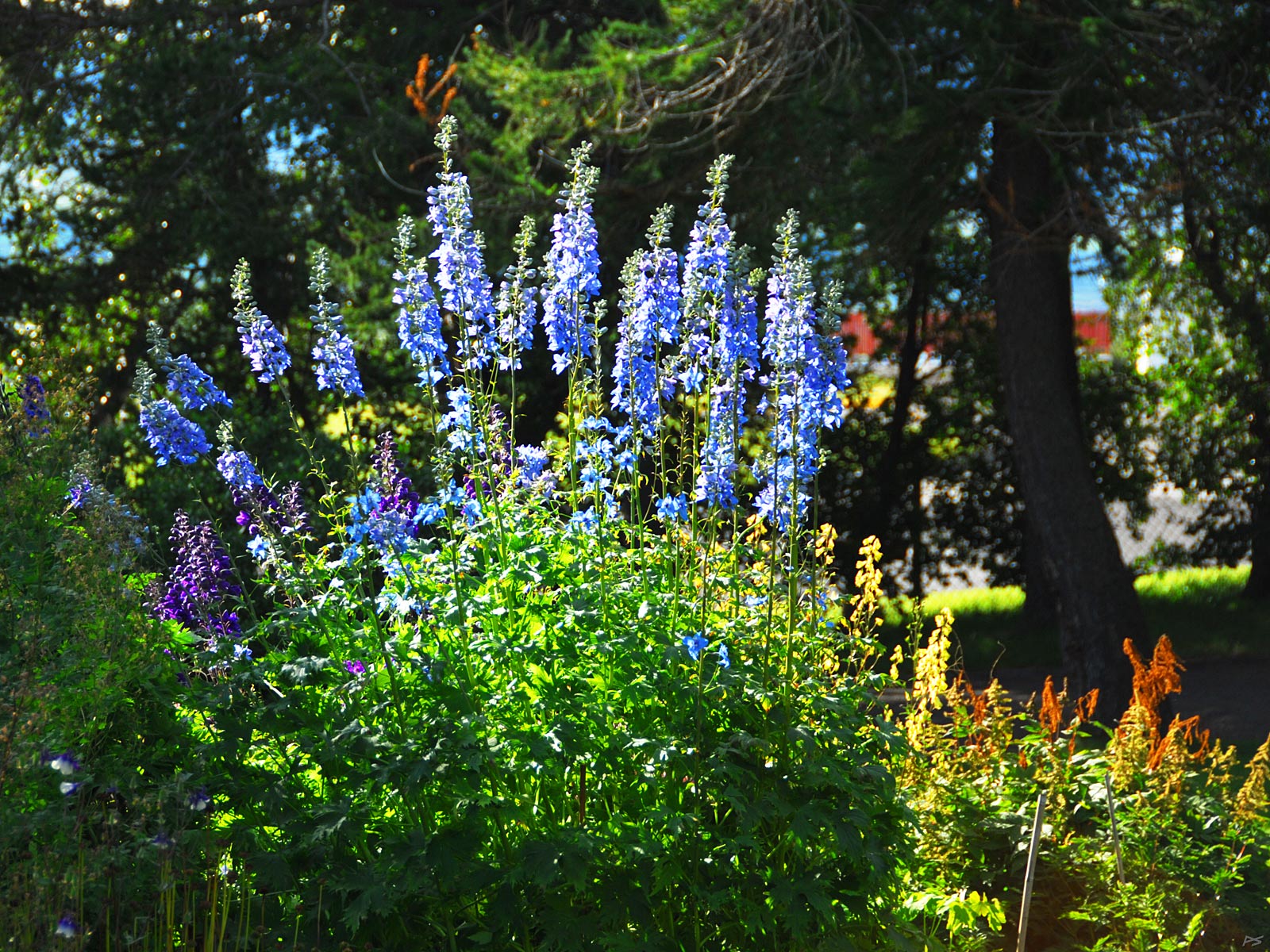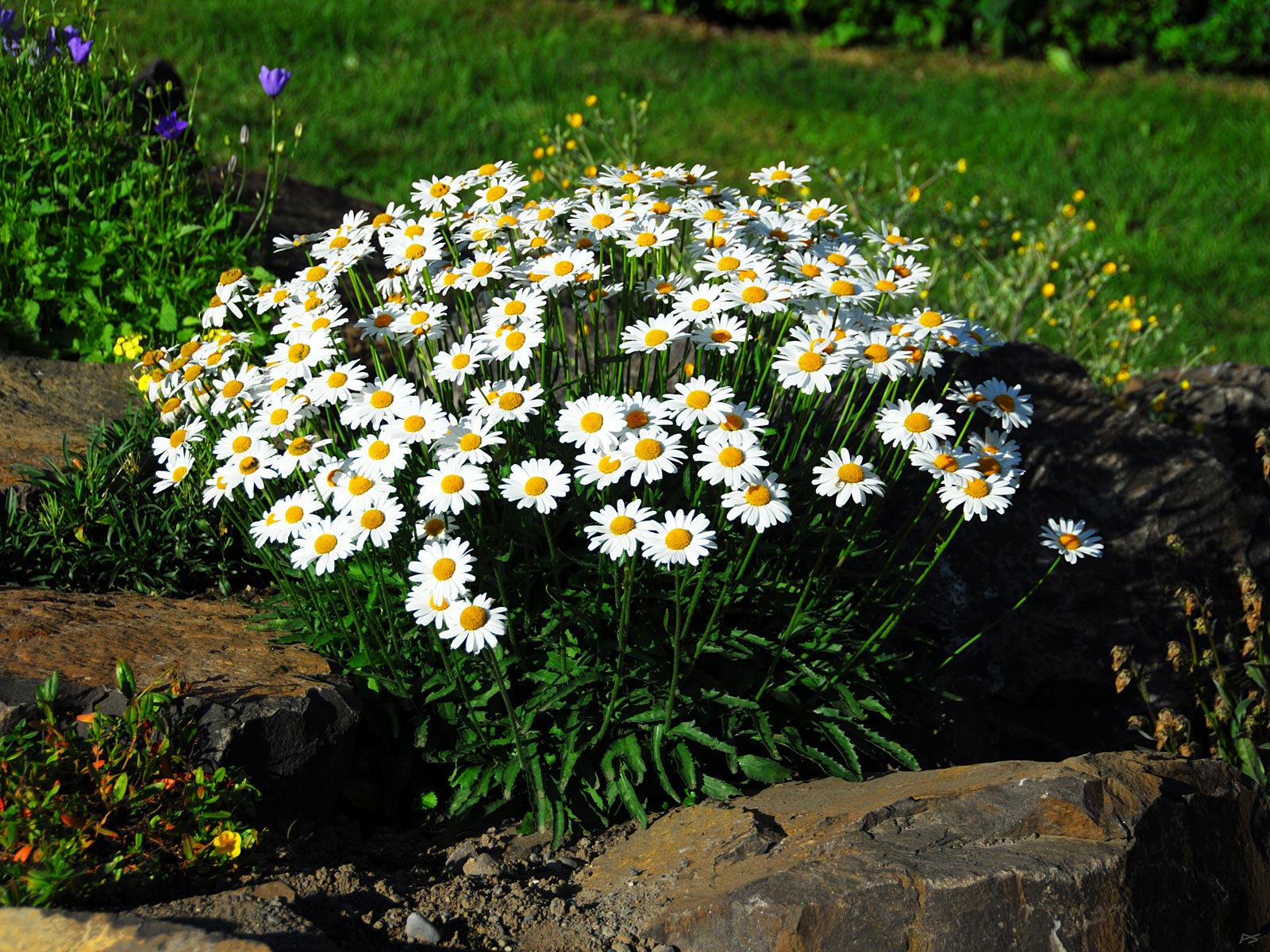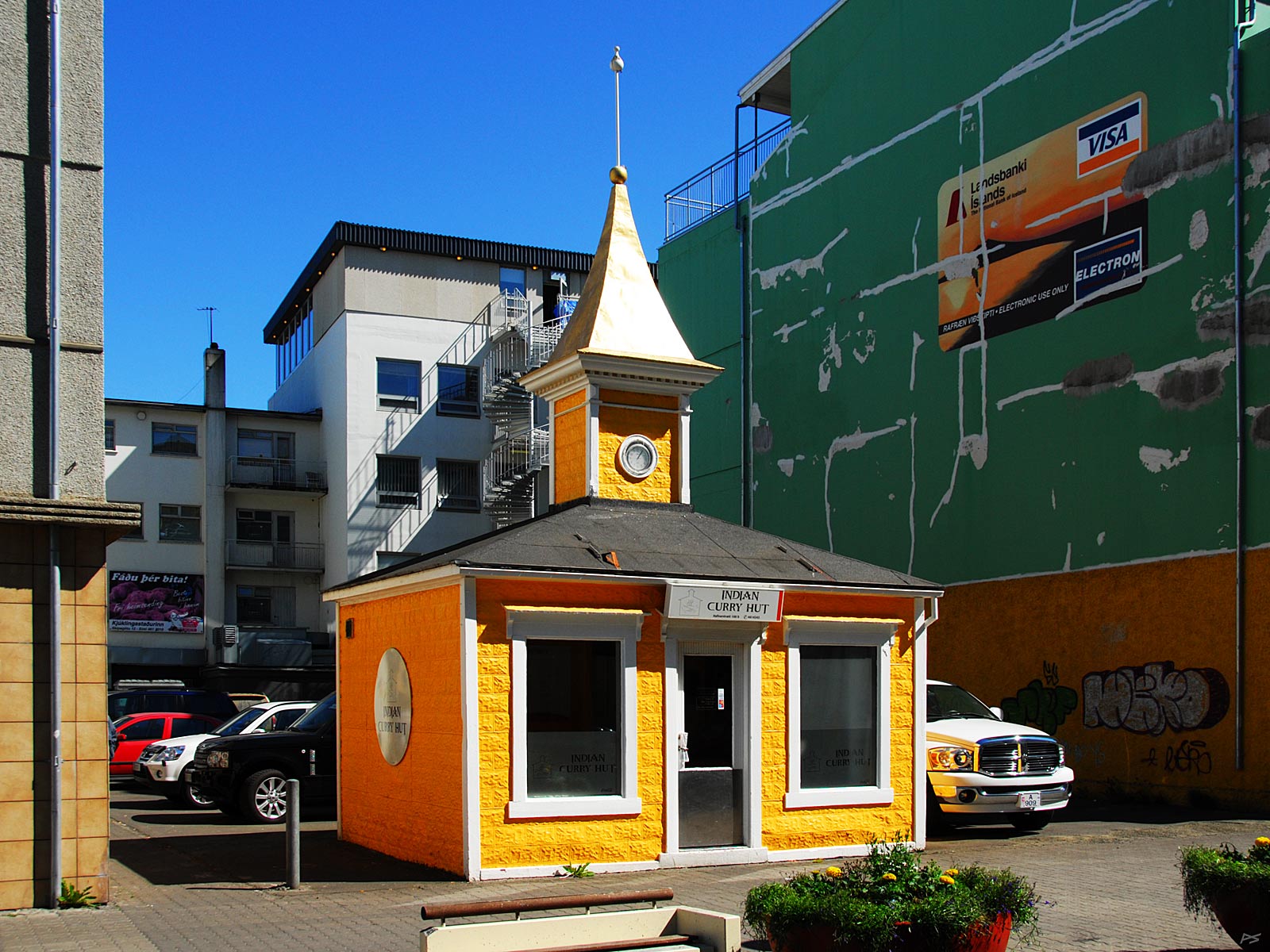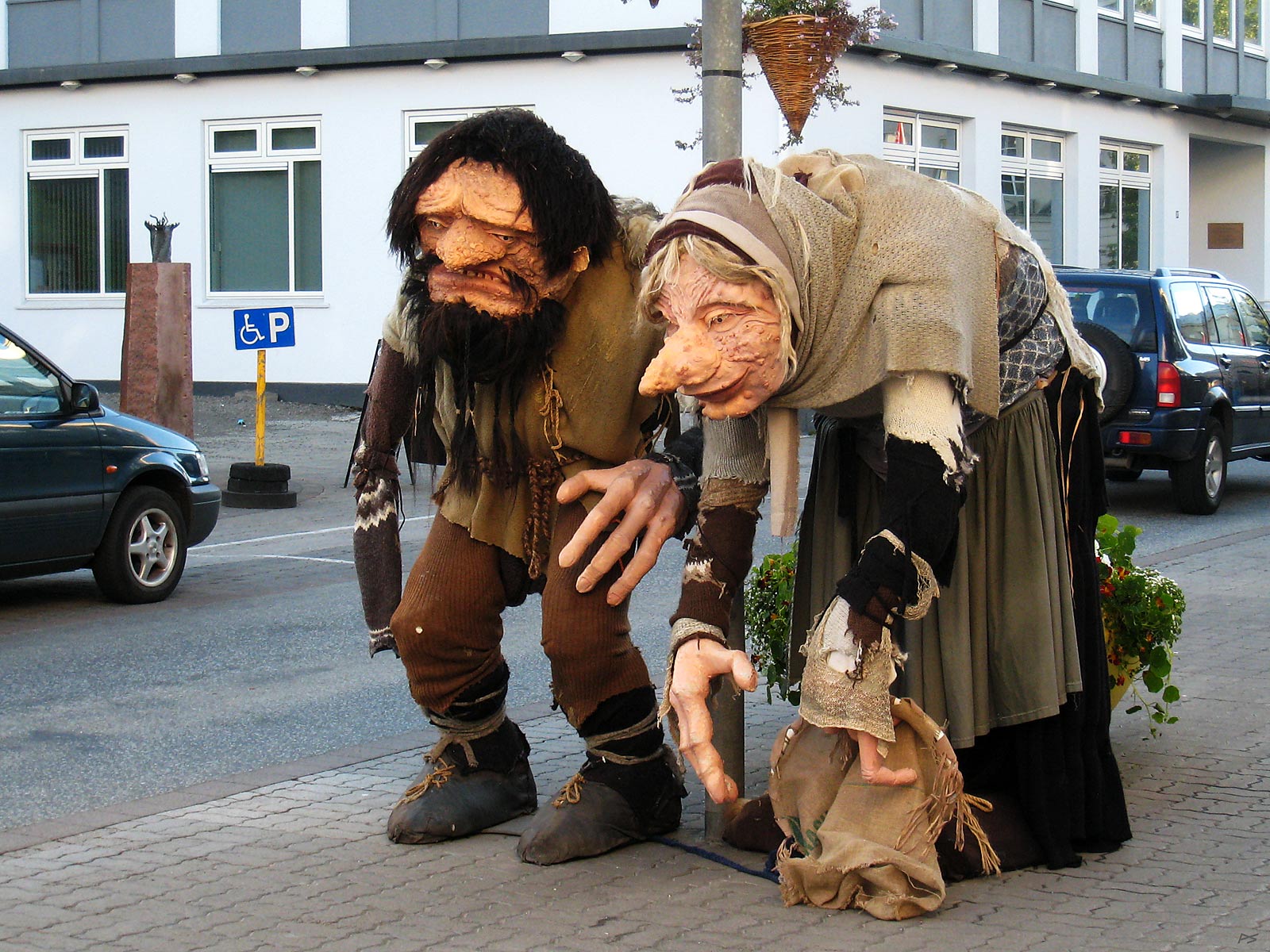"Capital of North Iceland"
Less than 18 000 inhabitants
The largest town outside the Greater Reykjavík area

(2010-06-07)
View of Akureyri from the east side of the fjord (Eyafjörður). It's still springtime on 65°41'North and the (imported and widespread) Alaska Lupin (Lupinus Nootkatensis) is blooming. Situated at the inner end of this narrow fjord, the harbour is excellent. The town houses a university. It also has its own hot water supplies from bore-holes, fed directly to the home hotwater pipelines, and I didn't notice the usual smell of sulphuric compounds.

(2013-08-07)
Akureyrarkirkja, standing on a hilltop in the centre of Akureyri, was consecrated in 1940. It was designed by Guðjón Samúelsson who also designed Hallgrimskirkja in Reykjavík.


(2013-08-07)
From Lystigarður Akureyrar, a public park (from 1912) and botanic garden (from 1957), now covering 37,000 m² near the centre of Akureyri. This is claimed to be the northmost botanic garden in the word. There are about 6600 plants from all over the world, thriving in open air and in nurseries. There are also about 430 plants growing in Iceland. And everything seems well kept, please note that this is a very small town.

(2013-08-07)
Lystigarður may be translated 'pleasure garden', and it is indeed a pleasure being here on a fine day. It is close to the Arctic Circle, but the impression says much lower latitudes.

(2013-08-07)
Lystigarður Akureyrar, another sample.

(2010-06-07)
Watching the architecture and street life in Akureyri. It's a Monday in early June, it's sunny and pleasantly "warm", and people are enjoying life.

(2010-06-07)
An Akureyri souvenir shop with the ubiquitous horned "viking" helmets (the real viking helmets never had horns). The Polar bear coats are synthetic, but true polar bears are known to have come ashore from ice floes up north, often having swum long distances. Don't expect to see any of them though, or be eaten by one, but they are usually very hungry and will eat you if they have a chance.
There was one in 2016, and between the 2008 and 2011 four polar bears came ashore, all on the north coast and all being shot dead as usual. Before that there was one in 1993. Earlier there was a sighting roughly every two years, but before 1950 it happened twice a year on the average. The top year on record is 1881 with 73 sightings.

(2010-06-07)
'Indian Curry Hut' in Akureyri. It struck me that this picture shows three characteristics of Iceland: Small size, bright colour paints, and credit cards. Icelanders have long been world leaders in the use of credit cards. (We have spent altogether three weeks in Iceland and we never had any paper money.)

(2010-06-)
In an Akureyri street. Those figures are evidently meant to be trolls as they have four fingers. Nevertheless, they do remind me of a description of Icelandic people written in a letter from an unknown French doctor who had visited Iceland in the year 1670. As retold by John Barrow in the introduction to his book 'A Visit to Iceland, By Way of Tronyem, in the "Flower of Yarrow" Yacht, in the Summer of 1834':
– He then gives some account of the natives—that is, of the fishermen—some of whom, he says, live in caverns in the rocks, others in huts, some built with fish-bones, some with wood covered with turf. They and their beasts lie under the same roof; they are all ugly, both men and women; they lie upon hay or straw in their clothes with skins upon them, and make but one bed for the whole family. All their work is fishing; they are nasty, rude, and brutal: they are almost all of them wizards and witches; they worship the devil by the name of Kobald; they worship an idol cut out of a piece of wood with a knife, very hideous to look on, which they adore privately, and hide for fear of the Lutheran priests.
